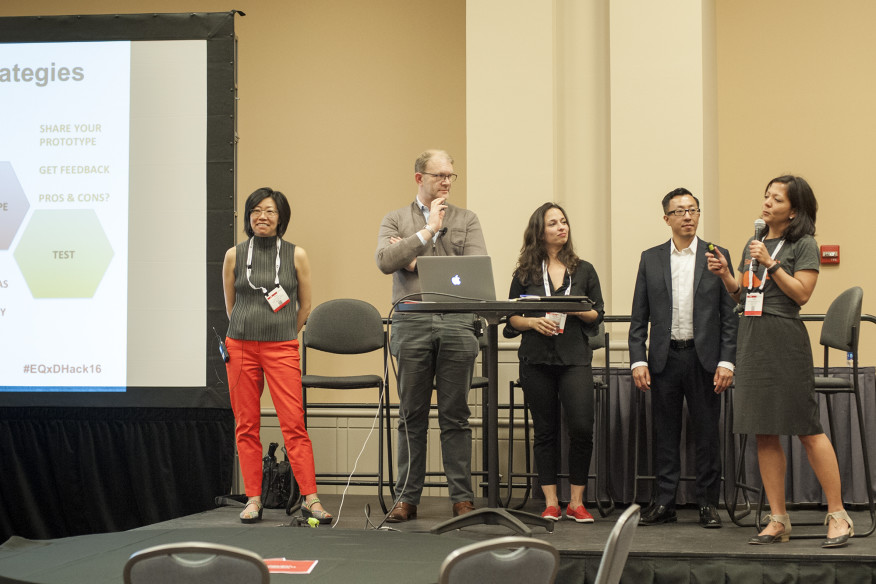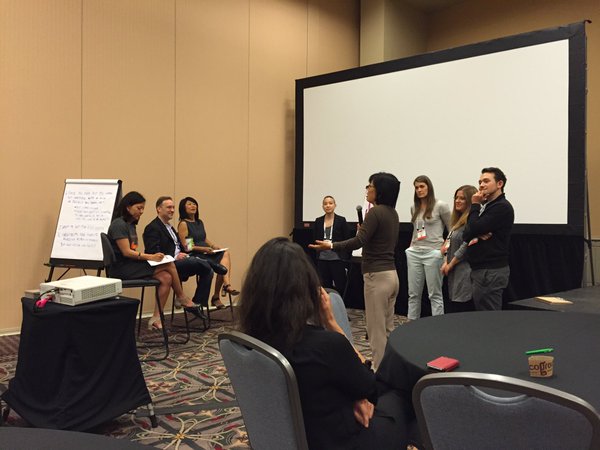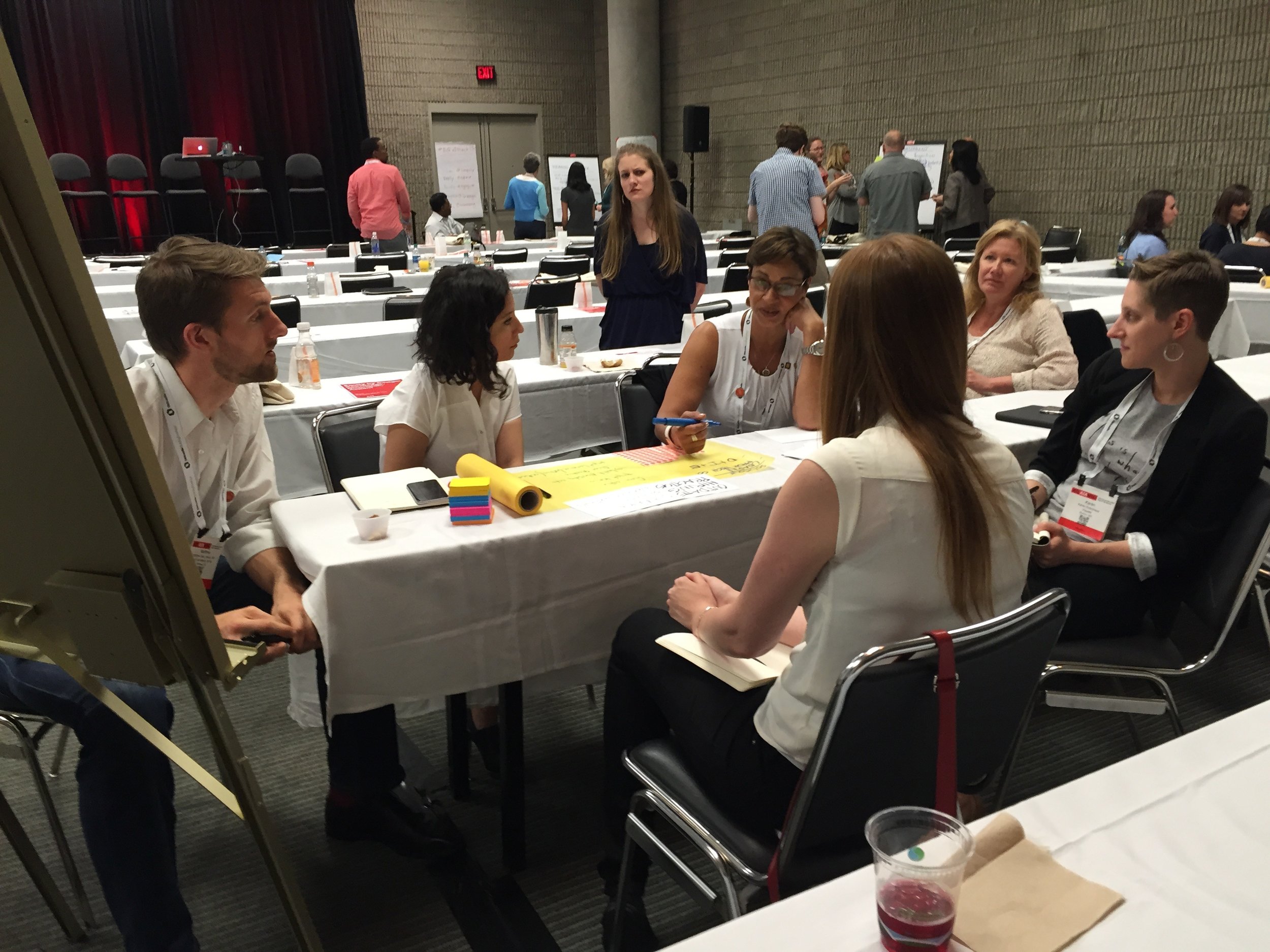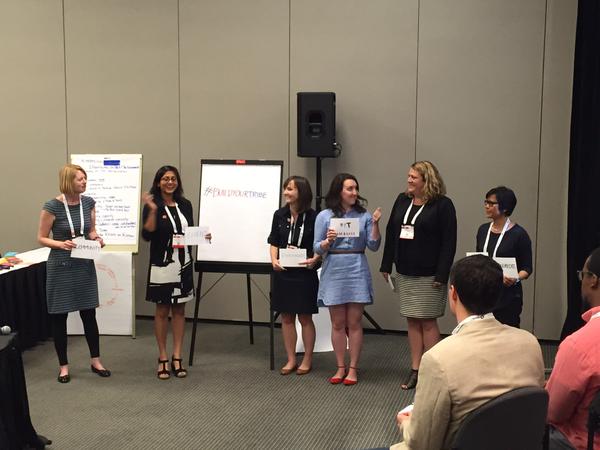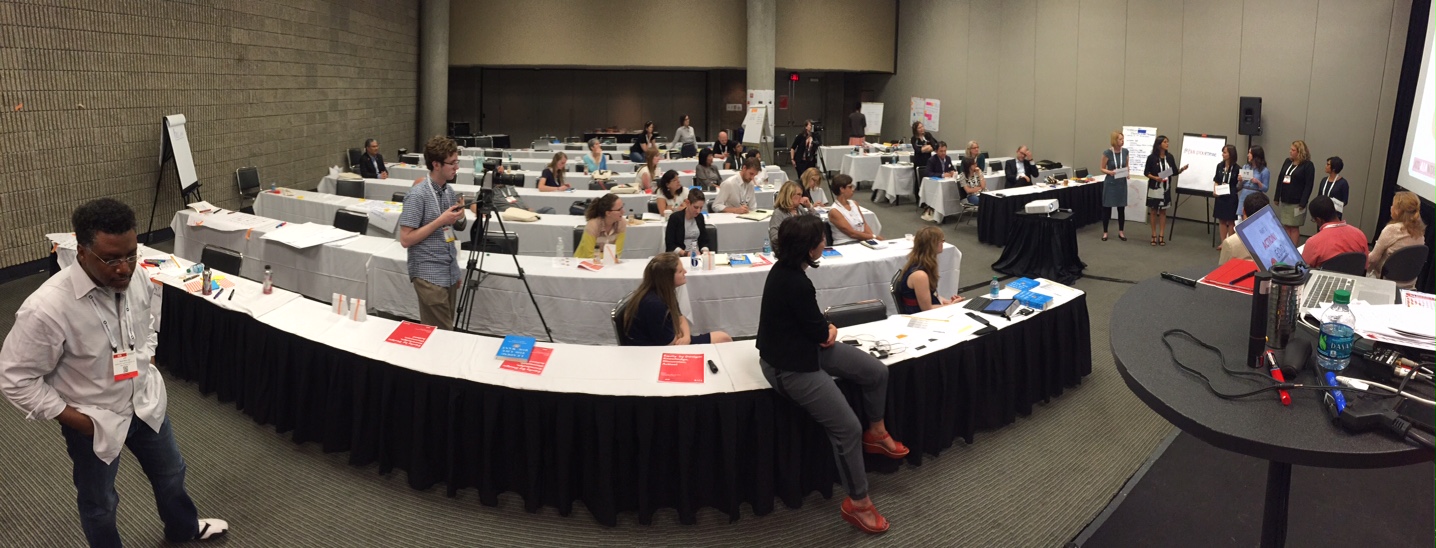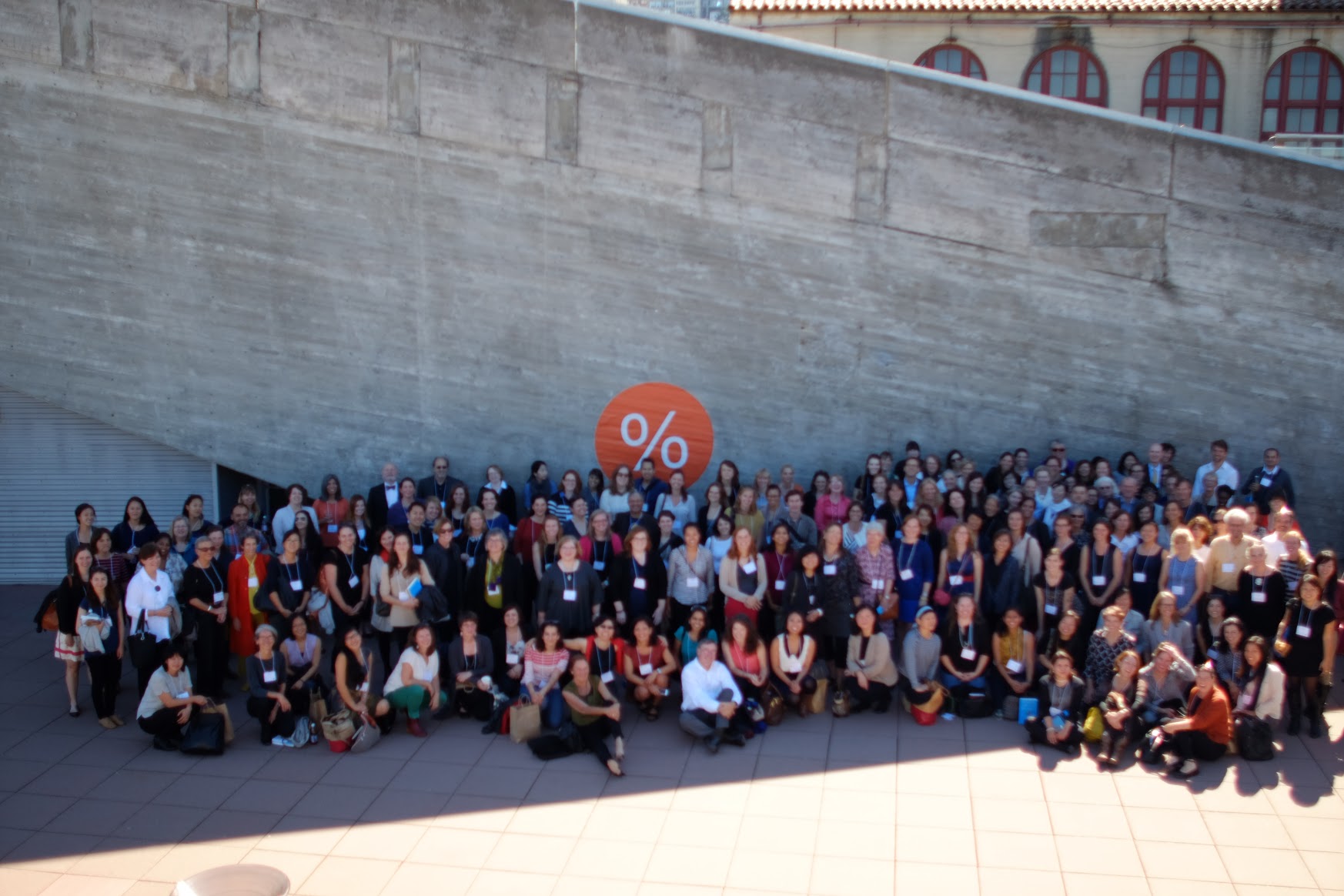The 2018 Equity on Architecture Survey is on track to be the largest survey ever conducted on equity within the architectural community in the United States. We're thrilled by the support that this project has received, and can't wait to share the results in the fall.
If you've already taken the survey, thank you for sharing your stories, experiences, and aspirations - by using your voice, you're helping to contribute to a better vision for the future of architectural practice!
If you haven't taken it yet, it's not too late! Before the survey closes this Friday, March 16, please check your inbox to look for an invitation to take the survey. The following organizations have become Survey Distribution Partners by distributing the survey to their mailing lists on our behalf:
Architecture Collaterals
- ACSA
- AIA National
- NCARB
- NOMA
AIA Components
- Alabama
- Alaska
- Architects League of Northern New Jersey
- Arizona
- Arkansas
- Atlanta
- Austin
- Baltimore
- Boston Society of Architects
- Brazos
- Brooklyn
- Buffalo/WNY
- California Council
- Canada Society
- Central New York
- Central Oklahoma
- Central Valley
- Charleston
- Chesapeake Bay
- Chicago
- Cleveland
- Colorado
- Corpus Christi
- Dallas
- Dayton
- Detroit
- District of Columbia
- East Tennessee
- Eastern Ohio
- Florida
- Florida Gulf Coast
- Fort Lauderdale
- Fort Worth
- Gainsville
- Georgia
- Golden Empire
- Grand Rapids
- Greater Columbia
- Greenville
- Honolulu
- Houston
- Indiana
- Jacksonville
- Kansas City, MO
- Long Beach / South Bay
- Long Island, NY
- Los Angeles
- Maine
- Massachusetts
- Miami
- Michigan
- Mid-Missouri
- Minnesota
- New Jersey
- New Mexico
- New Orleans
- New York City
- New York State
- Northern Nevada`
- Northern Virginia (NoVA)
- Ohio
- Orange County
- Orlando
- Palm Beach
- Pasadena & Foothill
- Pennsylvania
- Philadelphia
- Pittsburgh
- Portland
- Potomac Valley
- Puerto Rico
- Queens
- Richmond
- ROCHESTER
- San Fernando Valley
- San Francisco
- Savannah, GA
- Seattle
- Silicon Valley
- South Carolina
- South Dakota
- South Dakota
- South Jersey
- Southwest Michigan
- Southwest Washington
- Southwestern Oregon
- St. Louis
- Tallahassee
- Tennessee
- Texas Society of Architects
- Triangle
- UK
- Vancouver (Washington)
- Vermont
- Virginia
- Wichita
- Wisconsin
- Wyoming
Schools of Architecture
- Auburn University
- Boston Architectural College
- California State Polytechnic University, Pomona
- Clemson University
- Ferris State University
- Florida A&M UNiversity
- Florida International University
- Georgia Institute of Technology
- Hampton University
- Harvard University
- Louisiana State University
- McGill University
- Mississippi State University
- Montana State University
- Morgan State University
- Norwich University
- Oklahoma State University
- Prairie View A&M University
- Roger Williams University
- Syracuse University
- Syracuse University
- Tulane University
- Tuskegee University
- Universidad de Puerto Rico
- Université Laval
- University of Arizona
- University of Arkansas
- University of Calgary
- University of Hawaii
- University of Illinois - Champaign Urbana
- University of Maryland
- University of Michigan
- University of Minnesota
- University of North Carolina at Charlotte
- University of Notre Dame
- University of Oregon
- University of Pittsburgh
- University of Southern California
- University of the District of Coumbia
- University of Virginia
- University of Washington
- University of Wisconsin, Milwaukee
- Virginia Tech
- Woodbury University
- Yale University
Architecture Firms
- 4rmula
- AISC
- Alliiance
- Architecture Outfit PLLC
- architecture+
- Arrowstreet
- Ayers Saint Gross
- BAR Architects
- BKSK Architects
- BLT Architects
- Blue Star integrative Studio Inc
- Bohlin Cywinski Jackson
- Brush architects llc
- bv architecture + development
- CallisonRTKL
- CannonDesign
- Carleton Hart Architecture PC
- Centric Design Studio
- CO Architects
- CollinsWoerman
- Cooper Carry
- Cycle Architecture + Planning
- DHC Design
- DIGSAU
- DiMella Shaffer Assoc. Inc.
- DLRGroup
- EHDD
- Ehrlich Yanai Rhee Chaney Architects
- ELS Architecture and Urban Design
- empty space design
- ESG Architects, Inc.
- Eskew Dumez Ripple
- FKP Architects
- Frederick Fisher & Partners
- FXFowle
- Gast Architects
- Gensler
- GFF Architects
- Glave & Holmes Architecture
- GMK Associates
- Goettsch Partners
- Gould Evans
- Harrison French & Associates (HFA)
- HCMFAIA
- HDR
- HED
- HGA
- HKS
- HOK
- Imrey
- Jackson Liles Architecture
- Jennifer Garcia Architecture Studio, LLC
- Jeri L. S. Morey, Architect
- Juliana Inman Architect
- KMD Architects
- Kuth Ranieri
- Lake|Flato
- Lazarus and Sargeant Architects
- Leddy Maytum Stacy Architects
- Leers Weinzapfel Associates
- Leesa Mayfield Architecture
- Lewis Colten aia and associates
- LHB
- LS3P
- MADI Group
- Mancini Duffy
- MG2
- Michele Grace Hottel, Architect
- Miller Dunwiddie
- Mithun
- Mogavero Architects
- MWA Architects, Inc.
- NBBJ
- Noll & Tam
- O'Kelly + Kasprak
- Ohio History Connection Architectural Services Department
- Opsis Architecture, LLP
- ORCHESTRA Design Studio
- Payette
- Perkins + Will
- Perkins Eastman
- Pfluger Architects
- PYATOK architecture + urban design
- Quattrocchi Kwok Architects
- Quinn Evans Architects
- R&A Architecture + Design
- Red Iron Architects
- Reif Architects
- Remodern, Inc.
- Rice Fergus Miller
- Rob Walker Architects, LLC
- Robert AM Stern Architects, LLP
- RS&H
- RSP Architects
- saam architecture
- Sara Stucky Sayner, Architect
- Schwartz SIlver
- Scott + Cormia
- SERA Architects Inc
- SHELTER Stories
- Shepley Bulfinch
- Smith Dalia Architects
- Smith-Karng Architecture
- SmithGroupJJR
- Solomon Cordwell Buenz
- SOM
- Stantec
- Steinberg Hart
- Studio105 Architecture, LLC
- TMPartners, PLLC
- Trautman Associates
- Trivers Associates
- Walter Robbs Callahan & Pierce Architects, PA
- Waterleaf Architecture, LLC
- William Wilson Architects, PC
- WRNS Studio
- WXY architecture + urban design
- Yost Grube Hall Architecture
Our Survey Distribution Partners are an integral part of this project. We would like to thank each of them for their work to promote equity throughout the profession!
Don't see your firm listed above? It's not too late to become a distribution partner! Please click the button below to sign up today!
Thank you to our EQIASurvey18 Sponsors!
@AIASF @AutodeskAEC @AutodeskRevit @HOKNetwork @CannonDesign @HDRarchitecture @SkanskaUSA @SmithGroupJJR @hga @mithun_design @wrnsstudio @IntegralGroupCA @McCarthyBuild





